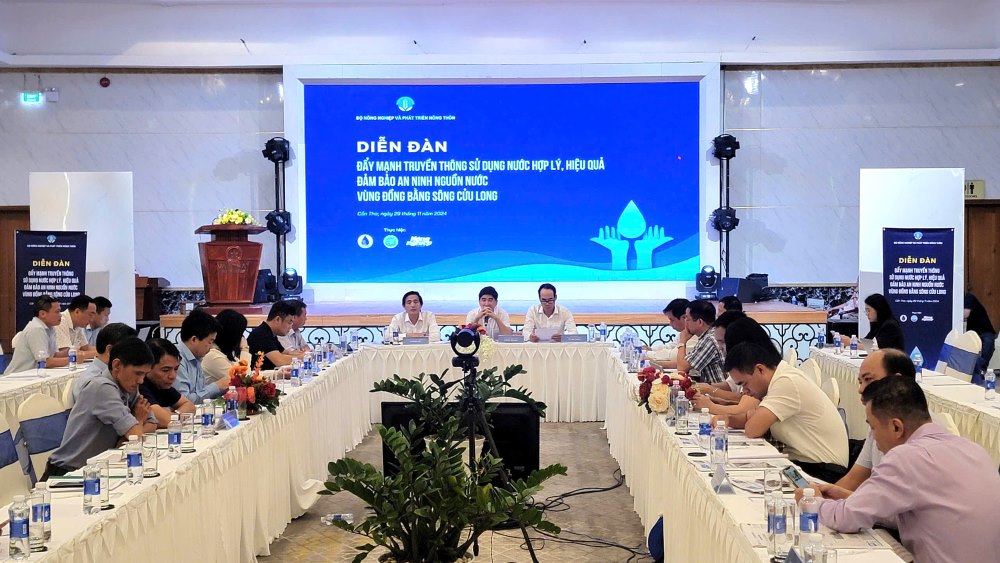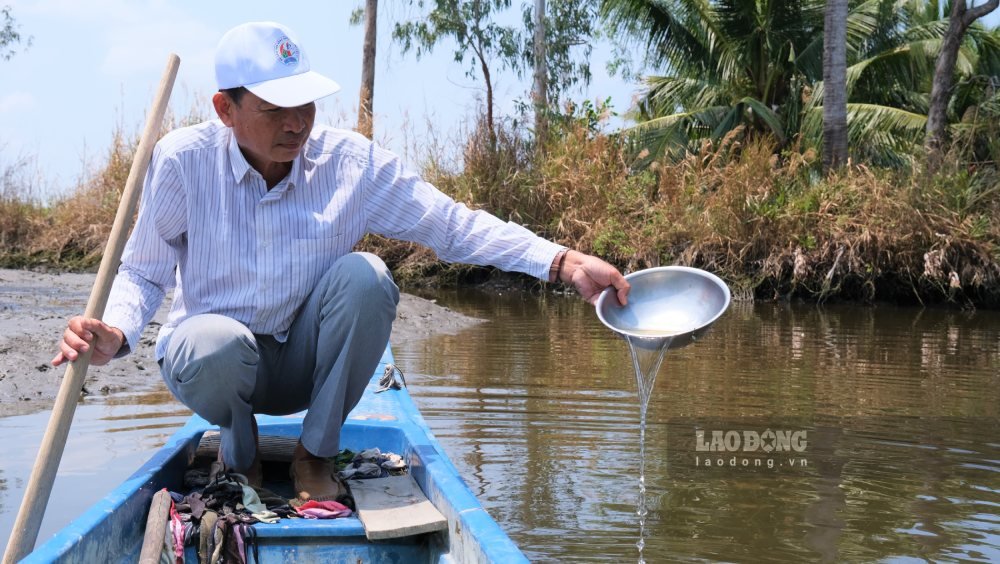Challenge, threat
On the afternoon of November 29, in Can Tho City, the Forum "Promoting communication on rational and effective water use to ensure water security in the Mekong Delta" took place.
According to the report of the Department of Irrigation (Ministry of Agriculture and Rural Development), in recent times, the Central Government and localities have made many efforts in managing and regulating available water resources. However, the activities of urbanization, industrialization, restructuring of agricultural production, and people's uneconomical water usage habits have been putting great pressure on infrastructure, especially the infrastructure system serving water supply for daily life, agricultural production, aquaculture, urban drainage, and wastewater treatment.

Particularly for the Mekong Delta - considered the largest rice granary, seafood granary, and fruit granary in the country - it is facing serious challenges related to water security.
Accordingly, the prominent issues are the increase in hydropower dam chains in the upstream, the diversion of the Mekong River flow to other areas, the decline in soil and water quality, changes in land use purposes accompanied by conflicts in water resource allocation, low water use efficiency, exploitation of water resources beyond the permitted level, along with the increasingly obvious impacts of climate change and rising sea levels...
These challenges directly threaten the livelihoods of local people and national food security.
Solution table
Sharing at the Forum, Mr. Tran Minh Tuan - Director of the Center for Irrigation and Water Supply Research (Southern Institute of Water Resources) - said that it can be said that the Mekong Delta does not lack water, the important thing is whether it is salt water or fresh water.
Currently, water resources in the region are being affected by three main challenges including water sources from upstream, from the sea and internal problems.
In the coming time, it is necessary to improve comprehensive management such as production management, market forecasting, improving forecasting of saltwater intrusion sources, modernizing monitoring work, etc. People are advised to be proactive with solutions for water storage, water-saving irrigation, and drought and salinity prevention.
Mr. Tran Duy An - Deputy Head of the Mekong Delta Irrigation Planning Department (Southern Institute of Irrigation Planning) - informed that to serve socio-economic development and people's livelihoods, the whole region has 15 irrigation systems serving over 2.5 million hectares, accounting for 64% of the total area of the region.
However, the Mekong Delta faces major challenges in terms of freshwater security, riverbank, coastal, canal and ditch erosion. Water temperature, rainfall and tidal water levels are expected to continue to increase during the period 2030-2050.

According to the Plan for Natural Disaster Prevention, Control and Flood Drainage to 2030 with a vision to 2050, the upstream region will need to control floods, improve flood drainage axes, and respond to extreme storm and flood situations; the mid-stream region: Complete the irrigation system, build water transfer systems to supply water to areas far from the source. Study solutions to control salinity on the Mekong mainstream; the downstream region: Build irrigation systems for daily life, upgrade sea dykes and apply water storage technology during the dry season.
A representative of the Southern Institute of Water Resources Planning said that with comprehensive solutions, the Mekong Delta not only aims to increase the frequency of water supply to 90% by 2025, but also goes further in building a sustainable agricultural region, adapting to climate change and developing in harmony with nature.




